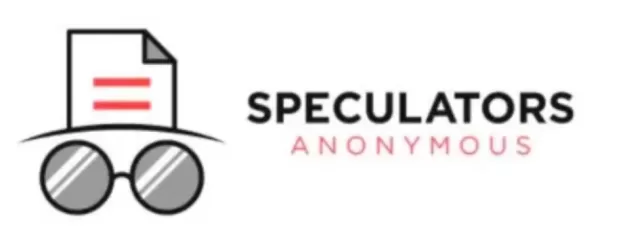One of my favorite speculating stories is when George Soros and Stanley Druckenmiller (my idol) masterfully ‘Broke the Bank of England’ on Black Wednesday (1992).
This was when Soros uttered those unforgettable words – “go for the jugular” – before he and Druckenmiller led the charge shorting the British pound.
This forced the Bank of England to drop out of the European Exchange Rate Mechanism (ERM) – a semi-peg system with the German Mark – which was a huge embarrassment for the ruling British Government (they had only joined two years prior in 1990).
During the 1990’s – many other countries ended their pegs. Especially after the ‘Asian Contagion’ crisis.
But there’s one country left with a peg that I believe is nearing its end. And according to my Macro-Fragility Index (MFI) – it’s heading towards a sharp devaluation sooner than many realize. . .
I’m talking about the Hong Kong Dollar (HKD) peg. . .
Here’s a little history – back in the early 1980’s, the Hong Kong dollar (HKD) linked itself to the U.S. dollar (USD) using a semi-peg system.
This means that the Hong Kong Central Bank – aka the Hong Kong Monetary Authority (HKMA) – must control the supply and demand of HKD in order to keep it pegged to the USD at the agreed exchange rate.
And since May 2005, the pegged exchange rate trades within a band of 7.75 – 7.85 HKD for every one USD.
This means if the HKD nears the bottom of the 7.75 edge (meaning it’s stronger), the HKMA must sell HKD and buy USD (to decrease the HKD’s value). And if the HKD nears the top of the 7.85 edge (meaning it’s weaker), the HKMA must sell USD and buy HKD (to increase the HKD’s value).
But because of the U.S. Federal Reserve’s tightening since late 2015 – the U.S. dollar has soared in value. For perspective – the DXY (a dollar index against foreign currencies) is up over 25% since 2014.
The higher short-term rates and strong U.S. dollar has caused capital to flow from Hong Kong into the U.S.
And since the HKMA must stay in lockstep with the Fed (more below) – this tightening really damaged the Hong Kong economy. And with it – the future of the HKD peg.
Let’s break it down. . .
Recently – the HKMA’s had to intervene multiple times in the foreign exchange market to defend the HKD’s peg.
For instance – the HKMA just bought four billion HKD ($500 million USD worth). And before that – only last week – they purchased $200 million USD worth.
All together – the HKMA’s spent $700 million in the last month alone.
They’re doing all this purchasing in attempt to push the HKD-to-USD exchange rate back into ‘healthy’ peg territory (away from the very edge).
But it’s not working. . .
After many years of the peg staying stable – the HKD is now barely holding on.
And even with all this intervention and buying from the HKMA – the HKD’s still at the very bottom of its permitted $7.85 peg (remember – the higher the HKD is, the weaker it is against the USD).
Take a look. . .

There are clear reasons for this weaker Hong Kong dollar – such as:
Lower interbank rates in Hong Kong compared to the U.S (creating a profitable arbitrage opportunity). . .
The HKMA hiking short-term rates higher than the Hong Kong economy can handle (following the Fed’s tightening cycle). . .
A slowing Chinese economy. . .
But the main reason’s that – because of the HKD peg – the HKMA is stuck within the ‘Impossible Trinity’ . (Aka the Mundell-Fleming Trilemma which’s named after Nobel Prize winning economist – Robert Mundell) . . .
In short – the ‘Impossible Trinity’ is a theory that deals with the management of fundamental decisions for international monetary policy.
But putting this in layman terms – the theory suggests that Central Banks primarily have only three options when managing monetary policy.
These options include. . .
Setting a fixed currency peg – allow capital to flow freely with no capital controls (free-floating currency) – and have an independent monetary policy (the Central Bank can move rates up or down freely).
Now here’s why this is called the ‘impossible trinity’ – a country cannot have all three at once. (Only two of the three are achievable at a single time).



For example: a country can choose to have a currency peg with one or more countries and have free-flowing capital with others. But if it chooses this route, they cannot have an independent interest policy. (Since moving interest rates would stress the currency peg).
Another example: a country can set up a currency peg and also have an independent interest rate policy. But it cannot allow a free flow of capital. (Again, the currency peg cannot exist with free-flowing capital since inflows or outflows of investors will stress the peg – thus they must have capital controls).
(Just so you’re aware – most economies today choose to have free-flowing capital and independent monetary policy. This means no currency pegs allowed. Hence why most countries have free-floating exchange rates).
This brings us to the mess Hong Kong’s in. . .
Since they’re pegged to the U.S. dollar – the HKMA gave up interest rate independence. Meaning they simply follow the Fed’s interest rate policy (if the Fed hikes, so will the HKMA – and vice versa).
Take a look at the below chart – you can see since the Fed began tightening in December 2015 – the HKMA’s had to also. . .



The problem here is: the U.S. economy’s been strengthening. So the interest rate hikes were justified in the Fed’s eyes.
But Hong Kong isn’t doing so well (and neither is China).
Putting it simply – the rising rates are putting greater pressure on an already slowing Hong Kong economy (when they should be cutting rates). . .
The plunging economic growth (GDP), a declining property market, slowing demand for loans, and lackluster investments have caused the Hong Kong economy to weaken considerably. (Not to mention China – a big part of the Hong Kong economy – is also weakening).
Now – if Hong Kong wasn’t locked in this U.S. dollar peg – then they could cut interest rates to stimulate economic growth.
But they can’t – thanks to the laws of the Impossible Trinity – unless they break the peg and allow the HKD to float freely.
I know many cite the massive U.S. dollar reserves that the HKMA’s built up over the years – since this is what they can use for defending the peg.
And they can – for now at least.
But what if the Hong Kong economy slows further and the domestic banks need a bailout? After factoring in how much it would cost to re-capitalize Hong Kong banks – how much reserves would they have left? We’ve witnessed throughout history (especially during 2008) how financial crises and recessions can swallow money like a black hole.
Or what if the HKD stays too strong relative to what the Hong Kong economy justifies? Hurting asset prices and exports.
Both these will have investors dumping HKD to buy USD or even Chinese yuan (CNY) – as they have been.
Will the HKMA use up all their dollar reserves just to simply maintain a more than decade old currency peg with the U.S.? I don’t think so.
I believe the current HKD-to-USD peg will end as the HKMA adopts an independent monetary policy. And after – we could see a 25-40% drop in the HKD as the HKMA cuts rates to stimulate the slowing economy.
Now – I’m not saying this will happen tomorrow. But I think it has a higher chance of happening than the mainstream believes.
In my opinion – like all other pegs in the past – this one will die also.
And sooner than later. . .
I’m currently looking at possible ways to play a Hong Kong dollar devaluation. Once I find a trade that offers the positive asymmetry (low risk – high reward) I like – I’ll make sure to share with subscribers.
Stay tuned.

